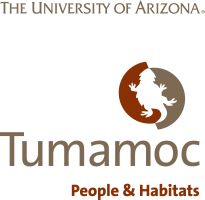
New Ecosystems for Tucson |
 |
|
|
Imagine waking up each day in the next best thing to Saguaro National Park. Imagine living in a neighborhood teeming with a diverse array of native wildflowers and shrubs, native birds, magnificent butterflies. Imagine knowing that your enjoyment — far from being a guilty pleasure — is setting an example from which the world will learn how to preserve its wealth of species. Those are the goals of the New Ecosystems Project. Sound big? Well, Tumamoc has a history of delivering big. The idea? Learn enough about the natural history of Sonoran Desert species so that:
We began by putting together a database of the 300+ perennial plant species that live on Tumamoc Hill. The database has information about things like plant habitat requirements, flowering seasons, spininess, etc. It includes whether a species produces food, and whether it is attractive to birds or butterflies. Next we wrote computer programs that can sort through the database to give us plant shortlists whose species are:
How will this help species worldwide? Tucson will be setting an example for cities and towns everywhere. Our ecological research tells us that if we want to save most of the world species, we'll have to make room for a large number of them in our own habitats. That includes our cities. Those new ecosystems in combination with lands that we set aside for national parks and biological reserves can do the job. If your neighborhood organization might be interested in participating, let's set up a visit to give you the details. Or let's bring you up to the Hill to show you more. Contact Keith Ashley. |